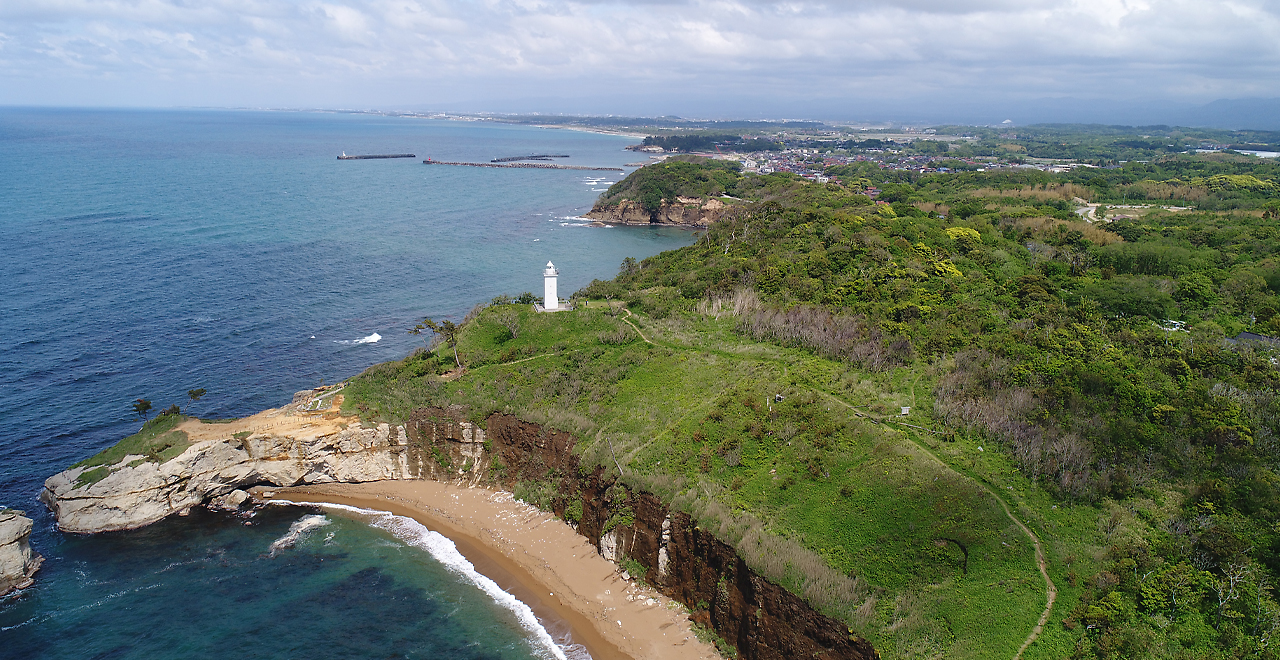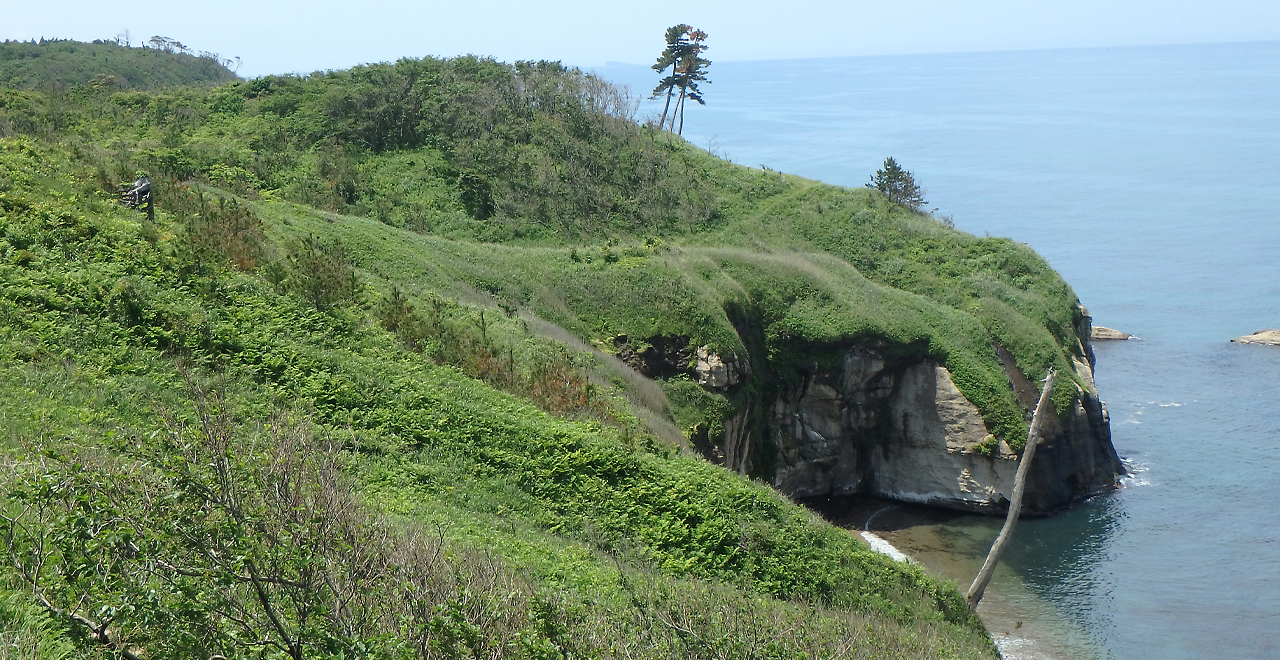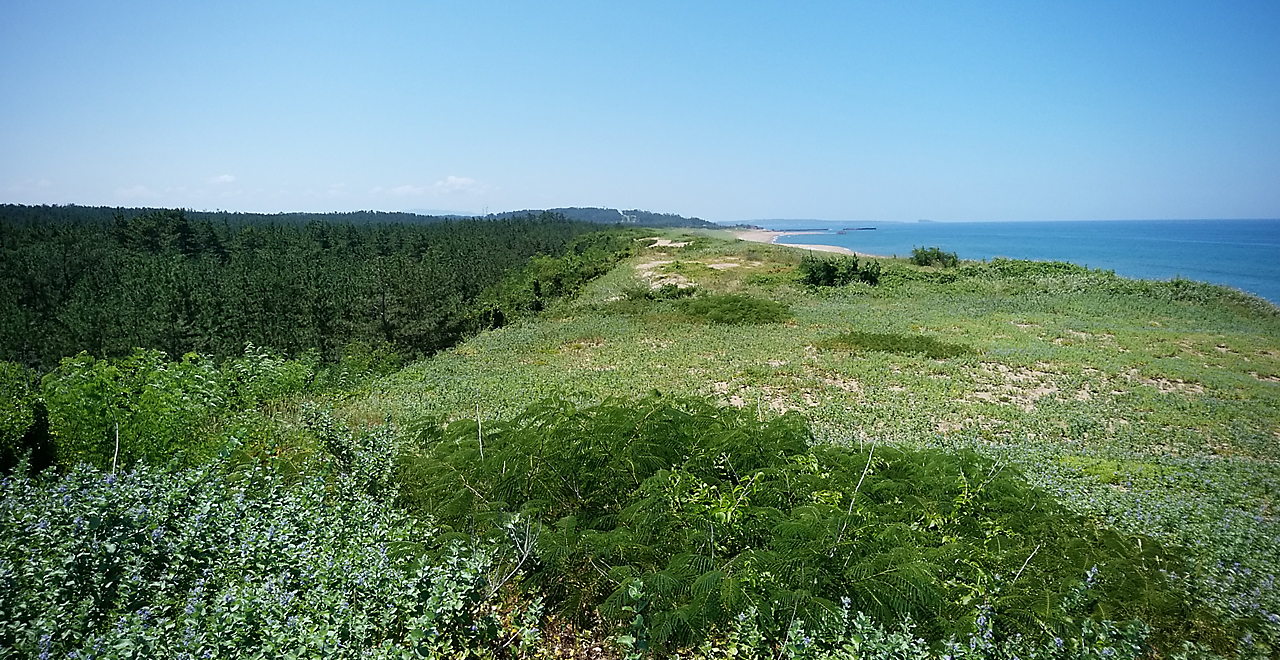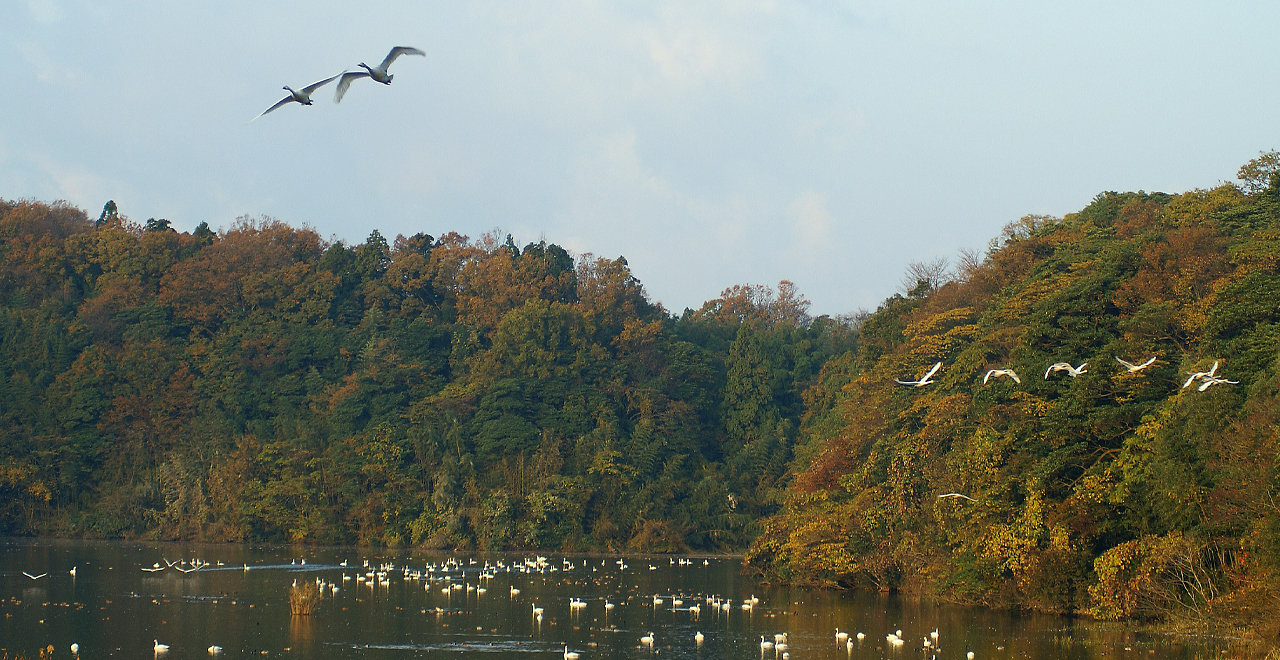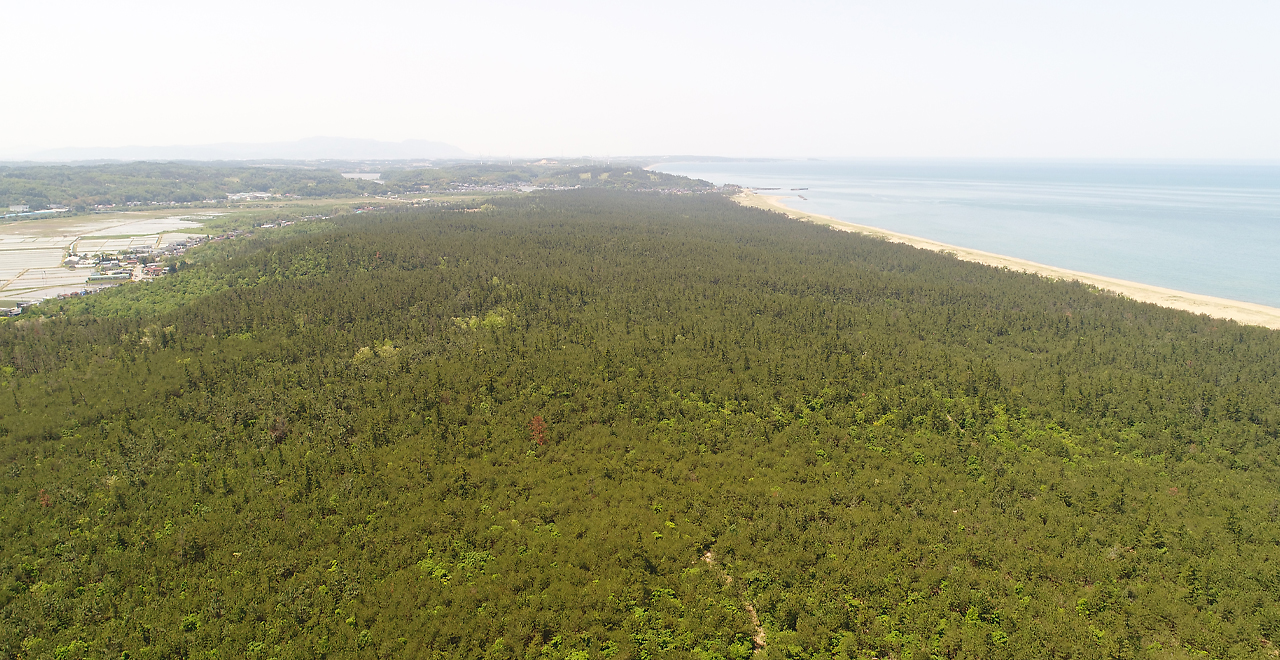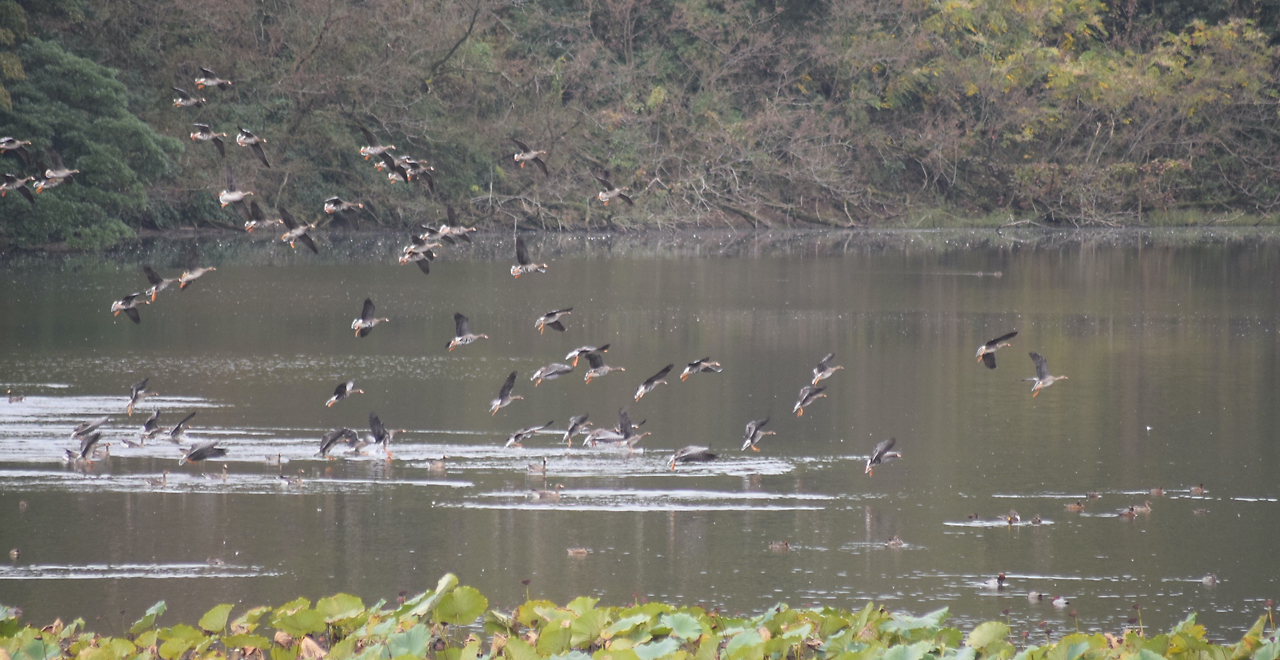Kaga-kaigan Coast Recreation Forest
429.77ha
Elevation Average: 0–75 m
White beaches, pine groves and the ocean combine to create superb scenery
White beaches, pine groves and the ocean combine to create superb scenery
- Newest information
- Area
- Activities
- Overview
- Latest Information
- Usage Guide
- Facility
- Map
- Location
- Access
(Distances and times are
provided as a guide only) - Management office
contact details - Information on Other Local
Tourist Attractions - Official Tourist Information
- Recreation Forest
Management Committee - Supporters
- Other
- Newest information
- Gathering information in advance is important to safely enjoy forest recreation that brings you closer to nature.
・CHECK
・When you go out, please check local tourist and related information and gather information on road closures, weather conditions, etc.
- Area
- Kinki Chugoku
- Activities
- Flower-viewing(Cherry (Prunus))(Outside the forest) Autumn leaf viewing (Outside the forest) Birdwatching (Includes surrounding area) Paddling / fishing / boating (pond / lake / river) (Outside the forest) (Payment required in some cases) Bicycle rental (Outside the forest) Shrine / Temple (Outside the forest)
- Overview
-
- Geographical/topographical features
- The Kaga-kaigan Coast Recreation Forest, located northwest of Kaga City on the border between Ishikawa Prefecture and Fukui Prefecture, consists of two areas: the Hamayama National Forest in the northeast and the Kaga-kaigan National Forest in the southwest.
The Hamayama National Forest features wave-cut cliffs that extend for about 3.5 km. Kasanomisaki (Cape Kasa) projects into the ocean, forming a striking contrast between its white cliffs and the deep blue of the ocean.
The Kaga-kaigan National Forest is a planted forest of Kuromatsu (Japanese black pine (Pinus thunbergii)) that lines the 3 km coastline. Visitors can take in an inspiring view of the white coastline highlighted by the dark-green pine trees. - Historical/cultural features
- The Hamayama National Forest, which projects into the ocean, has served as an important landmark for sailing ships since the construction of a lighthouse in 1950.
Hashidate Port near the forest flourished as a port of call for Kitamaebune trading ships during the Edo period (early 17th century to late 19th century) and is famous today for Zuwaigani (snow crab) and other fishery products.
The area where the Kaga-kaigan National Forest now stands was characterized by coastal sand dunes in the past.
Blown sand from these dunes damaged farmland, and Japanese black pine groves were gradually planted in the Edo period as a countermeasure.
However, the groves were devastated when the Daishoji Domain vanished with the elimination of feudal domains and the subsequent reorganization of Japan into prefectures in the late 19th century.
In the early 20th century, a project to develop a coastal disaster-prevention forest was carried out and the present-day coastal forest was formed over a long period of time.
The Kaga-kaigan Coast area has been selected as a nationally designted important cultural landscape, and in Katano-kamoike Pond adjacent to the national forest, a method of traditional duck hunting called "saka-ami" has been practiced since the Edo period and has been designated a folk cultural property by Ishikawa Prefecture. - Climate, flora and fauna
- The area has a typical Sea of Japan coast temperate climate, with an average annual temperature of 14°C, relatively high precipitation, and high humidity. Katano-kamoike Pond is registered under the Ramsar Convention as a stopover site for migratory birds.
It is one of the largest wintering sites in western Japan and a temporary home for thousands of geese and ducks each winter.
A wide variety of wild birds can be observed in the area, including Magan (white-fronted goose (Anser albifrons)) and Hishikui (bean goose (Anser fabalis)), which have been designated as natural monuments, Tomoegamo (Baikal teal (Anas formosa)), which is an endangered species, Misago (western osprey (Pandion haliaetus haliaetus)) and Mozu (bull-headed shrike (Lanius bucephalus bucephalus)). - Attractions
- The Hamayama National Forest’s large differences in elevation allow visitors to appreciate the contrast between the ocean and cliffs from various angles.
The Kaga-kaigan National Forest has a about 5 km cycling course. Along this course, cyclists can view the coastal dunes and pine groves amid an ocean breeze, and see wild plants such as Hamabohu (beach silvertop (Glehnia littoralis F.Schmidt ex Miq.)), Hamahirugao (seashore false bindweed (Calystegia soldanella (L.) R. Br.)) and Hamago (beach vitex (Vitex rotundifolia L. fil.)) from early summer through autumn.
Two bathing beaches can also be found in the vicinity. Kurosaki Beach is a hidden spot, almost like a private beach, and perfect for wading and swimming.
A rocky tide pool area stretches beside it where children can have fun gathering small sea creatures. Meanwhile, Katano Beach boasts high water clarity, and you can see the coastal cliffs of Tojinbo in Fukui Prefecture in the distance on a fine day.
- Latest Information
-
- Warnings (Flora and fauna)
- - Bees: Please be careful to avoid bees from July through October.
- - Some of the mushrooms that grow in the forest are dangerous, so do not taste any at your own judgment, under any circumstances.
- Warnings (Dangerous areas)
- - Do not deviate from the walking trail near cliffs when walking on the nature trails along the coast.
- Usage Guide
-
- Entrance fee
- Free
- Operating hours and seasons
- Accessible 24 hours a day, 365 days a year
- Accommodation options
- [Outside the forest]
Kaga Onsen-kyo (Awazu, Katayamazu, Yamashiro, Yamanaka) (hot spring resorts): about 30 minutes by car
- Facility
- Toilets and drinking fountains Walking trail Bike trail Parking lot Vending machine (Outside the forest) Shop (Outside the forest) Restaurant (Includes surrounding area) Resource center/Museum : Kamoike Observation Centre, Kitamaebune Ship Museum (Outside the forest) Cultural Property (nationally designated) (Includes surrounding area) Accommodation facilities (Hotels/Japanese inns) (Outside the forest) Hot Spring (Outside the forest) (Payment required in some cases)
- Map
- Location
- Daishojiuwagimachi / Daishojisegoemachi / Shioyamachi / Hashitatemachi / Kurosakimachi / Katanomachi, Kaga City, Ishikawa Prefecture
- Access
(Distances and times are provided as a guide only) -
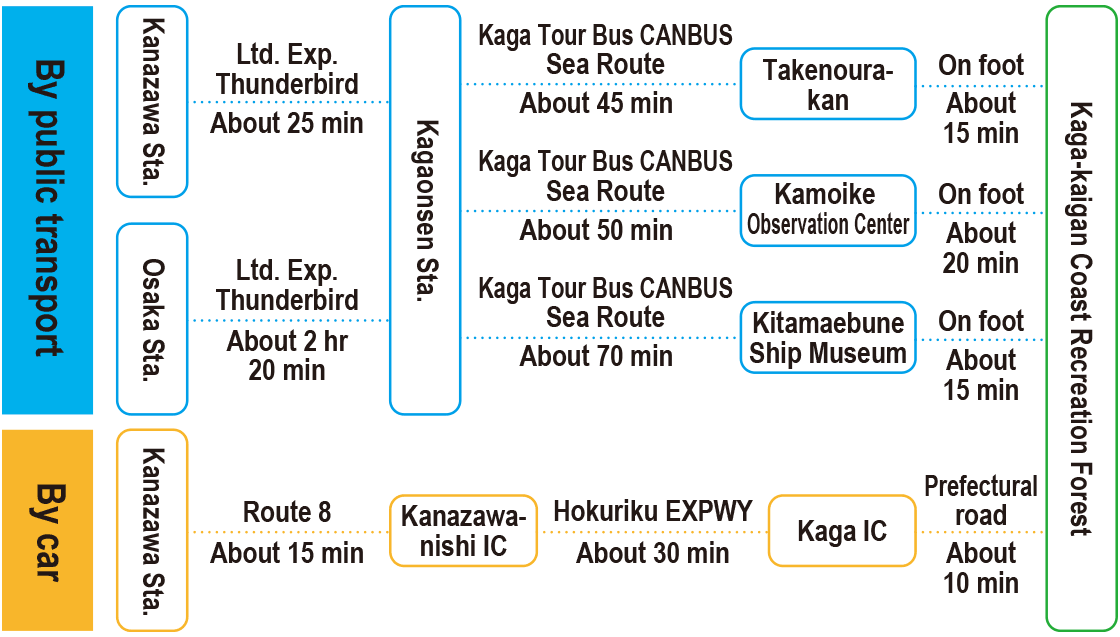
-
Parking lot capacity / parking charges- ・Kasanomisaki Parking Lot: Free parking for 10 vehicles
- ・Katano-kaigan Parking Lot: Free parking for 15 vehicles
- ・Shioya-kaigan Parking Lot: Free parking for 30 vehicles
- ・Uwagi Parking Lot No. 2: Free parking for 30 vehicles
- Nearby tourism facilities
- ・5 minutes on foot to Kasanomisaki Lighthouse
- ・20 minutes on foot to Katano Kamoike Observation Centre
- ・1 hour and 40 minutes on foot to Kitamaebune Ship Museum
- Management office contact details
-
Ishikawa District Forest OfficeTEL:076-261-7191
- Information on Other Local Tourist Attractions
-
River boat rides in the Daishoji castle town [External link]Kaga Fruit Land [External link]Kitamaebune Ship Museum [External link]Kaga City Katano Kamoike Observation Centre [External link]
- Official Tourist Information
-
Kaga Tabi / Machi Net [External link]
- Recreation Forest Management Committee
-
Kaga-kaigan Coast Recreation Forest Management CommitteeContact: Secretariat of the Kaga-kaigan Coast Recreation Forest Management Committee (in the Environmental Policy Division, Kaga Municipal Office)
TEL : 0761-72-7892
FAX:0761-72-7991
- Supporters
- ー
- Other
- ー





